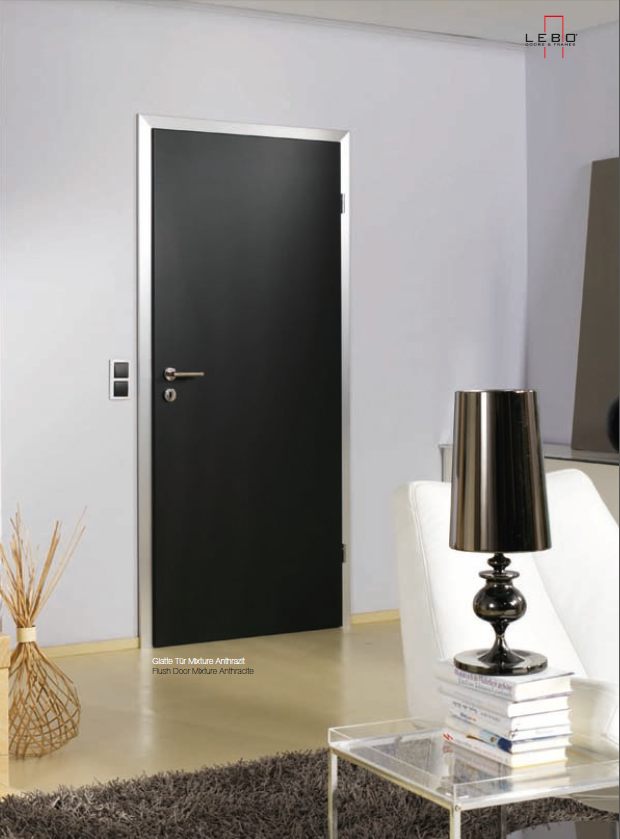Modern Interior Door Technology
What constitutes a Modern Door?
I want to explore “Modern Doors”, a business sector that is gaining momentum in Canada and the US in the recent years. The North American market is generally not known for providing a great selection of contemporary designed products. But, nonetheless, there has been some progress in accepting more modern themes in the last 10-20 years. One of these are Modern Interior Doors, which are primarily manufactured in Europe and, therefore, sometimes simply called Frameless Doors or European Interior Doors
The term “modern” refers to a minimalistic designed door that does away with ornate trims and door casing. It leaves the door basics intact – which are the door panel and door frame. The focus is to provide no distraction to the eye of the observer. You go through a door – that is all there is to it. The less bulk, the better.
A Modern European Door Frame
What sets a European Door Frame apart, is the simplicity and practicality of its installation. The frame is adjustable in width to allow for easy fitting on varying wall thicknesses. The trim is flat and very basic and can be pushed and pulled in and out to hide wall inconsistencies. Some modern interior door frames have hidden hinges to further increase the minimalist look of the door. Also, concealed door frames are the newest improvement in European Doors. With this technology, there is no visible door frame once the door is installed. A look highly desired by the elite ultra-modern designers and architects in Canada and the USA.
A Modern European Door Panel
What sets the European Door Panel apart is the rebated door edge. When you compare this door edge to the traditional North American flat door sides, you will notice a difference in look and feel. There is an increased performance in rebated door edges since they overlap the weather stripped door frames and create a barrier to light, sound and smells. Most Modern Interior Door Panels are flush (meaning totally flat) and this design differs from traditional 2-panel or french doors.
The use of Glass in Modern Doors
Glass is highly underused in traditional doors. We mostly see a full glass light or sometimes a so-called half-light. With European Interior Doors you see about 10 times the amount of glass shape and size variations. Most of them are very modern with the plane of the glass lying flush with the door surface. Glass can have varying textures but usually is Clear or Satin (Whitish) in finish to provide a modern feel. It can run all the way from top to bottom of a door without any top or bottom rails. This frameless glass look in interior doors is widely considered to be modern and unique.
Door Finishes in Modern Door Designs
Apart from classic finishes such as Paint and Clear Coats, we see a wide range of laminate finishes in Modern Doors. Horizontal Grain Doors are also a more modern approach in door surface design. The colours and wood grains in modern doors range from light woods such as Oak to dark woods such as Walnut. In between we see Concrete or Stone Finishes as well. Sometimes the use of leather in the door panel is employed. Modern Interior Doors are usually light Grey with an horizontal grain. The frame finish can be the same as the door panel finish or it can be different for contrast. Sometimes there can be metal inlays in the door panel in varying designs and layouts.
European Door Installation
Modern Door products are different in their installation procedure. Low-Expansion foam is employed to minimise door frame shaking. Perimeter foam installation in doors also helps to reduce sounds that come through gaps behind the trims. Another benefit in Modern Door installations is that there is no need for nails or screws since the door foam binds to the door frame and wall. An overall secure and sound reducing installation of European Doors.
Summary of Modern Door Innovations
Less bulk and less ornate extras when it comes to Modern Interior Doors. Contemporary designers will love the idea and sometimes design the house around the interior doors. Concealed Door Frames and Hidden Hinges provide less visibility of the more mundane parts of a door system. Glass variety and finish selection is abundant and sets Modern Doors apart from the more traditional North American counter-part.
